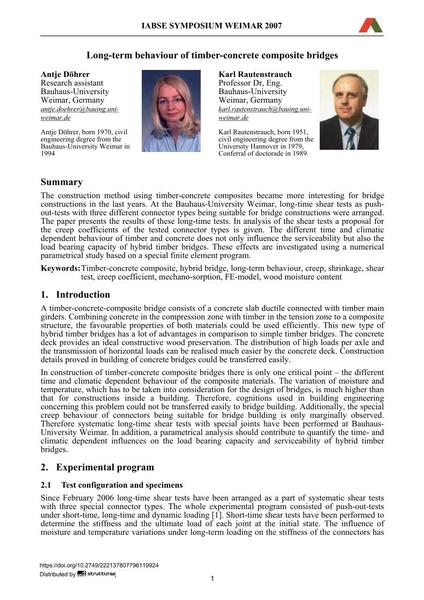Long-term behaviour of timber-concrete composite bridges

|
|
|||||||||||
Bibliographic Details
| Author(s): |
Antje Döhrer
Karl Rautenstrauch |
||||
|---|---|---|---|---|---|
| Medium: | conference paper | ||||
| Language(s): | English | ||||
| Conference: | IABSE Symposium: Improving Infrastructure Worldwide, Weimar, Germany, 19-21 September 2007 | ||||
| Published in: | IABSE Symposium Weimar 2007 | ||||
|
|||||
| Page(s): | 128-131 | ||||
| Total no. of pages: | 8 | ||||
| Year: | 2007 | ||||
| DOI: | 10.2749/222137807796119924 | ||||
| Abstract: |
The construction method using timber-concrete composites became more interesting for bridge constructions in the last years. At the Bauhaus-University Weimar, long-time shear tests as pushout- tests with three different connector types being suitable for bridge constructions were arranged. The paper presents the results of these long-time tests. In analysis of the shear tests a proposal for the creep coefficients of the tested connector types is given. The different time and climatic dependent behaviour of timber and concrete does not only influence the serviceability but also the load bearing capacity of hybrid timber bridges. These effects are investigated using a numerical parametrical study based on a special finite element program. |
||||
| Keywords: |
shear test wood moisture content timber-concrete composite creep shrinkage long-term behaviour hybrid bridge creep coefficient mechano-sorption FE-model
|
||||

